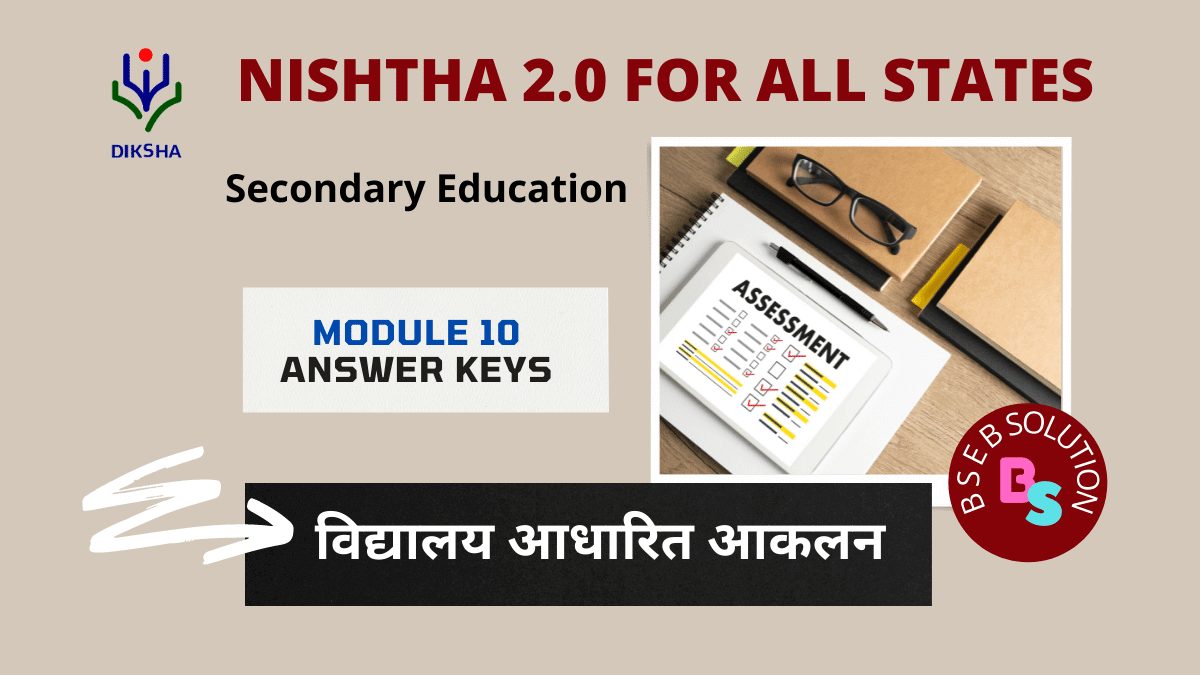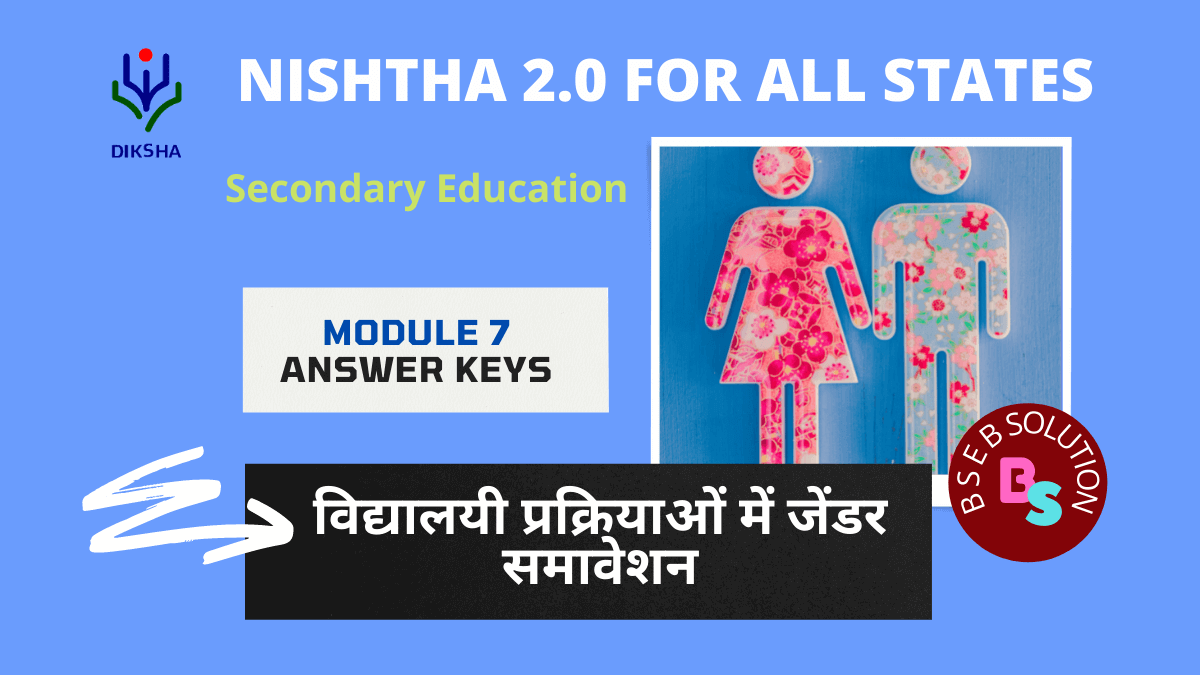Toy Pedagogy is a teaching – learning approach in which concepts and skills are learnt in joyful manner using toys, games, puppets etc. This course focuses on enabling the learner to learn and practice the use of toys in teaching-learning of his/her subject/s. In this post you will be able to know “Toy Based Pedagogy” AR, UP, UK, MZ, NL, OD, PB, AP, AS, BH, GJ, HR, HP, JK, JH, KA, MP, CHD, CG, DL, GA, MH, CBSE, KVS, NVS, MN, ML, RJ, SK, TS, TR, Nishtha SEC 2.0 Module 12 Quiz question and Answer Key PDF in English for Secondary School Teachers of all states. यदि आप यह प्रश्नोत्तरी हिन्दी में पढ़ना चाहते हैं, तो यहाँ क्लिक करें |
“Toy Based Pedagogy” Nishtha SEC 2.0 Module 12
The assessment questionnaire of Nishtha 2.0 and 3.0 training is the same in all states, but the Training Links are different. Out of around 40 questions, you will get only 20 random questions in an attempt. You will be able to get the certificate by scoring 70% marks in maximum three attempts.
All the Nishtha trainings available on Diksha App are design to improve teacher performance. So, take all the training seriously and solve the assessment quiz at the end. Certificate will issued only after securing 70% marks in the evaluation quiz. If you face any kind of problem in solving Nishtha SEC 2.0 Module 12 Quiz then get complete solution here.
Nishtha SEC 2.0 Module 12 Answer Key
Q. 1: Which of the following is a traditional Indian Toy?
- Robots
- Mobile/ Web apps
- Electronic Games
- Magic Cards
Q. 2: The skill of creating toys and games will not help students of the secondary stage in;
- making and managing tools
- handling tools
- selling handmade toys
- gaining knowledge and skills to use regional resources
Q. 3: ‘A toy can be a three-dimensional tangible object (natural or made) which can engage a child in
constructive play’
- Valid in certain situations only
- Valid to some toys only
- Not at all
- Yes, always
Q. 4: In the Toy pedagogy, ‘Toy’ has been referred as;
- Tool for assessment
- Examination method
- Pedagogical tool
- Teaching learning aid at ECCE level only
Q. 5: Which of the following is essential for implementing Toy Pedagogy?
- A dedicated toy room
- Capacity building of teachers on Toy Pedagogy
- Quality materials and equipment for making toys
- Professional toy creators
Q. 6: Does toy pedagogy promote exposure to traditional toys only?
- Traditional games only
- It promotes all types of toys
- Technology-based toys only
- Yes, it promotes traditional toys only
Q. 7: ‘Toys and games as an integral part of the learning process will surely spark and gear up the process of cognitive, psychomotor and emotional development of every learner.’
- Not at all
- Yes, always
- With certain
- age group only
- In certain situations only
Q. 8: Which of the following does not come under the traditional toy category?
- Lattoo
- Drones
- Firni the pinwheel
- Kites
Q. 9: Which of the following cannot be used as toys?
- Board Games
- Puzzles
- Books
- Online Toys – Mobile
Q. 10: Which of the following is not a basic principle of toy pedagogy?
- Learning is trans-disciplinary
- Learning is teacher-centric
- Learning is experiential
- Learning is inclusive
Q. 11: Toy pedagogy can be used by:
- Art teachers only
- Every teacher
- Sports teachers only
- Science teachers only
Q. 12: Which of the following is false about ‘Traditional Indian toys and games’?
- Prepare the children for the future role
- Toys took their inspiration from nature
- Toys are created by scientists only
- They are eco friendly
Q. 13: What are the possible uses of the toys created and used in the classroom?
- Create a toy bank for easy access and future use
- Give them away to teachers and students as gifts
- Keep it in a storeroom
- As showpieces in principals office
Q. 14: Which of the following cannot be done under toy pedagogy?
- Can visit places like Doll Museum
- Can use available indigenous toys
- Only teachers will make toys
- Can create their own toys in the class
Q. 15: ‘Toy pedagogy promotes an interdisciplinary approach:
- Only in selected topics
- Yes, it always does
- No, it does not
- In certain situations only
Q. 16: Toy pedagogy can be effective in teaching and learning of;
- Science and Social Science only
- Languages only
- All subjects
- Mathematics only
Q. 17: While engaging with toys, the learner doesn’t go through:
- Thinking and imagining
- Exploring and experimenting
- Rote learning
- Verifying and Applying knowledge
Q. 18: The ‘Kandhei Jatra’ or Toy Fair, a traditional festival is celebrated every year in;
- Bihar
- West Bengal
- Odisha
- Gujarat
Q. 19: What is Toy Based Pedagogy?
- Promotes games as a subject
- Learning ‘through toys and games’
- A subject in itself
- Promotes sports as a subject
Q. 20: Toy pedagogy cannot help in;
- Increasing student engagement
- Building critical thinking and problem-solving skills
- Incorporating interdisciplinary approach
- Memorization of correct answers
Q. 21: Dolls and stuffed animal toys can be used for teaching and learning;
- Languages only
- In all the subjects
- Science concepts only
- Social sciences only
Q. 22: How does toy pedagogy support the growth and development of a learner?
- It helps them get better marks
- Helps in physical growth only
- It helps in developing cognitive, psychomotor, and affective domains simultaneously
- It fosters critical thinking only
Q. 23: Which of the following is not fulfilled by toy pedagogy?
- Creativity and critical thinking are promoted
- Students become experts in creating toys
- Opportunities to understand and explore indigenous toys are given
- Students are introduced to different toys and games
Q. 24: Does toy pedagogy mean we have to create new toys for each learning experience?
- Use available toys
- Sometimes only
- Yes, always
- Only in certain subjects
Q. 25: Can toy pedagogy be used to develop 21st-century skills in students?
- No, not at all
- Only for few skills
- Only in a few situations
- Yes, it can be used
Q. 26: Which of the following methods do not fit in toy pedagogy?
- Memorizing the textbook content for doing better in exams
- Hands-on experience and its presentation
- Use of brain-storming sessions
- Use of toys for ice-breaking activities at appropriate intervals
Q. 27: Which of the following does not help in the promotion of toy pedagogy in school?
- Use chalk and talk method
- Creating a toy room in the school campus
- Inviting artisans and craftsmen to create toys
- Organise toy fairs
Q. 28: Toy pedagogy is a teaching-learning approach based on:
- learning with a unique art form
- learning through toys and games
- learning with modern tech-games only
- learning through music only
Q. 29: Can toys be helpful in creating inclusive classrooms?
- Toys do not promote inclusivity
- Toys are useful tools for the inclusive classroom
- Toys are useful only for special needs students
- Toys are helpful for gifted students only
Q. 30: ‘Indigenous toys and games, can play a major role in developing the cultural understanding and cultural expression among students of the secondary stage.’
- In some subjects only
- Yes, always
- No, this is false
- In selected situations only
Q. 31: Using toy pedagogy does not promote:
- Accurate memorization of content
- Competency-based learning
- Experiential learning
- Interdisciplinary connections
Q. 32: ‘The inclusion of indigenous toys and games in the teaching-learning process can help students connect with their cultural roots.’
- Yes, always
- Not at all
- In certain situations only
- With certain age group only
Q. 33: How does integrating toy pedagogy benefit students in the learning process?
- Develops fear towards the subject
- Decreases engagement
- Helps recognize new skills
- Does not provide ample time to complete allotted tasks
Q. 34: What of the following material was used to make toys during the ancient period?
- Glass
- Plastic
- Wood
- Fibre
Q. 35: The use of toys and games is not an efficient tool in developing the following skills;
- Critical Thinking and Problem Solving
- Communication and Adaptability
- Creativity and Imagination
- Reading
Q. 36: Which of the following does not come under Toy Pedagogy?
- Robots
- Games
- Handmade Toys
- Vocal Music
Q. 37: Toy pedagogy should be promoted in the classroom because it;
- Fulfills pedagogical needs of competency-based learning
- Helps in the beautification of the school
- Helps teacher in creating new toys for the school
- Improves percentage of the academic results
Q. 38: Which of the following does not come under toy pedagogy?
- Writing Poetry
- Interdisciplinary projects
- Experimentation to create new toys
- Using indigenous toys to teach concepts
Q. 39: Which of the following is not an Indigenous Toys / Games?
- Top or lattu
- Kites
- Snake and Ladder
- Digital Mazes
Q. 40: Can toys be integrated with all subjects at the secondary level?
- Cannot be integrated at all
- With Science only
- Only with social sciences and languages
- Can be integrated with all subjects
We hope that you have found the answer key for Nishtha Secondary 2.0 Module 12 ‘Toy Based Pedagogy’ Quiz, which helped you. Read the solutions of the quiz for modules other than “Toy Based Pedagogy” Nishtha Module 12 answer key by clicking the button below.
Get here the link of training for all English medium state boards available on Diksha App. In this you will know the list of all the latest training and the last date of the training course.
If you have any suggestions regarding Nishtha 2.0 Secondary Module 12 quiz answer key, please send to us as your suggestions are very important to us..







